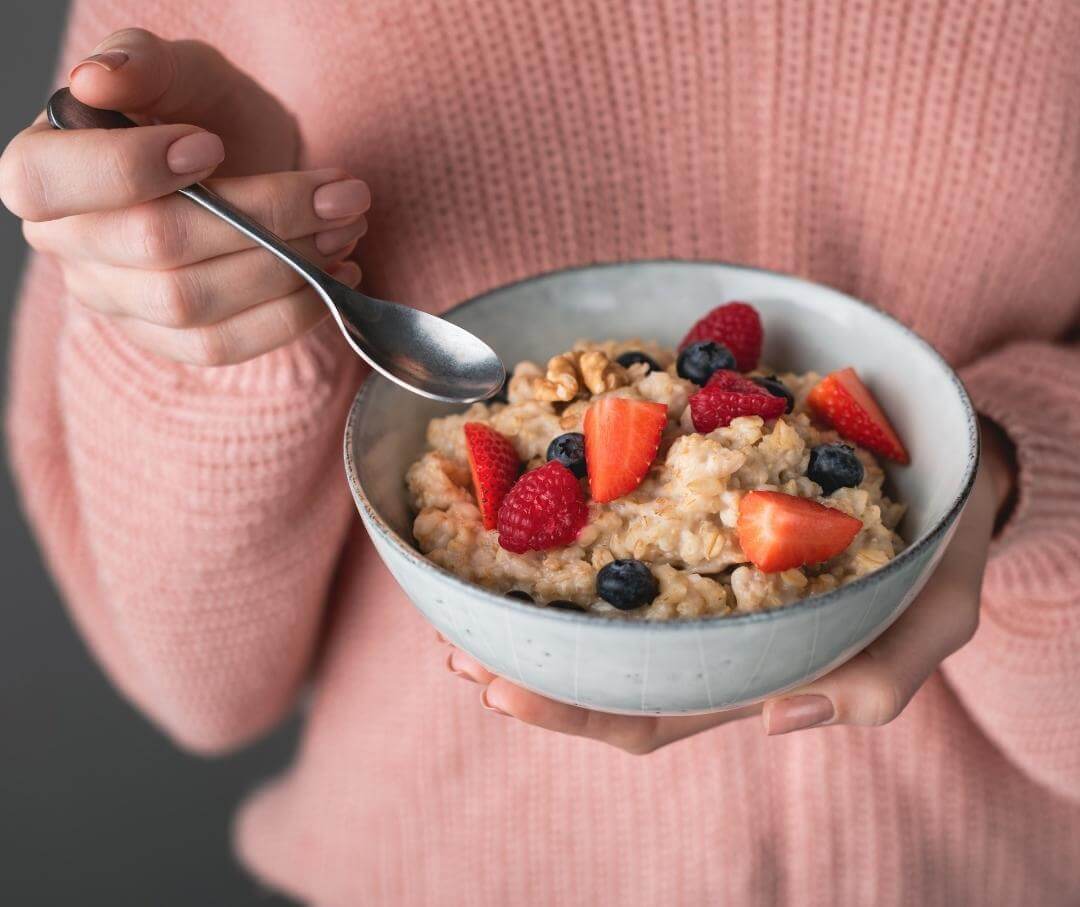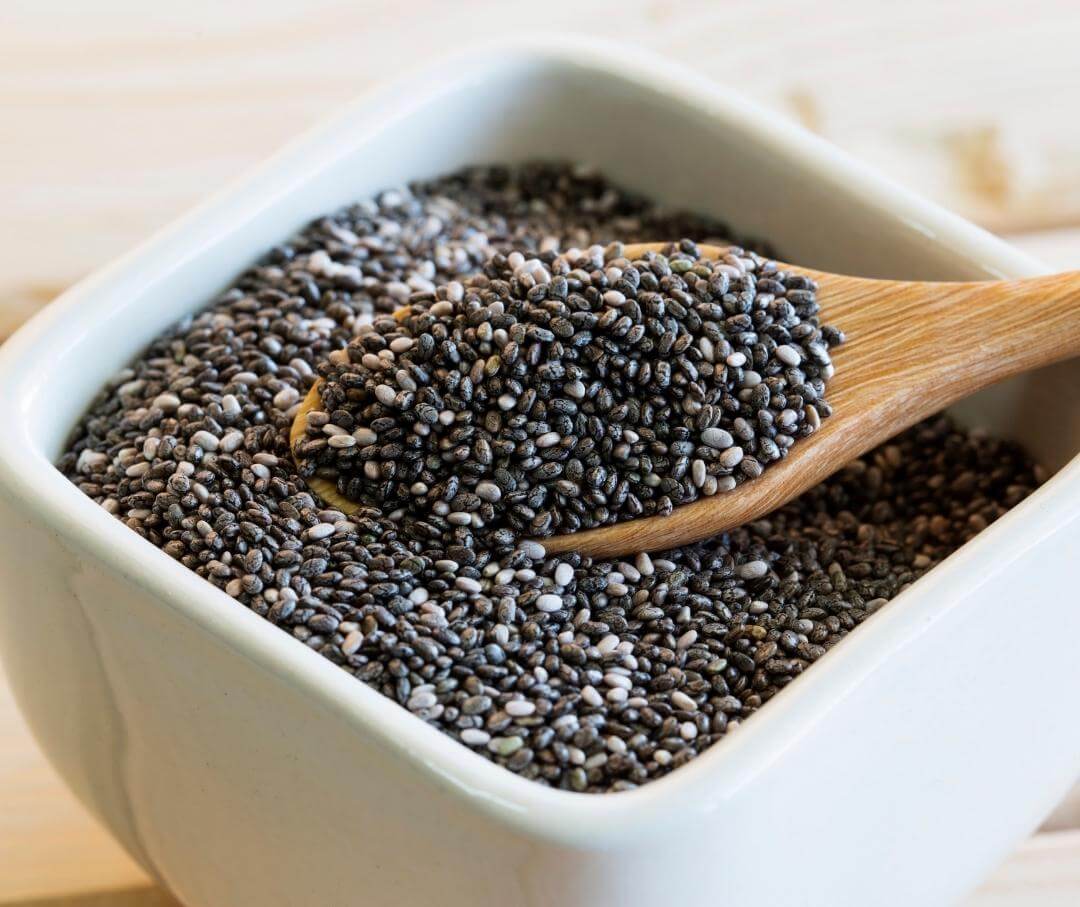Overview Of Oatmeal
Oatmeal is an economical whole grain that has been harvested and prepared for centuries. It offers heart health protection by lowering LDL cholesterol, and the high fiber content delays the glycemic impact on your blood glucose levels.1,2
High-fiber foods like oatmeal are satiating and filling. One small study from 2015 observed the level of satiety and blood glucose numbers of three participant groups: people who consumed cornflakes, oatmeal, or just water.3 Participants who ate oatmeal felt full the longest and also had the lowest glucose ranges.
Choosing oatmeal for breakfast can help you feel nourished so you can move on with your day without worrying about getting hungry between meals.
<p class="pro-tip"><strong>Learn about </strong><a href="/blog/high-fiber-low-carb-foods">the benefits of high-fiber low-carb foods</a></p>
Is Oatmeal a Healthy Food?
Yes, oatmeal is considered a healthy food across the globe. However, the ingredients you add to oatmeal as well as the way your oatmeal is processed will influence the glycemic response and nutrition profile of your meal. Oatmeal without added sugar is a blood-stabilizing food.
{{mid-cta}}
Nutritional Profile of Oatmeal
Oats are harvested, hulled, and processed to varying levels. The results are the oatmeal products we see in the cereal section of the grocery store. The USDA nutrition profile for raw oatmeal lists fiber, phosphorus, zinc, thiamine, and magnesium.4
Beta-Glucan Fiber
Beta-glucan soluble fiber is a polysaccharide (long-chain molecule) naturally found in plant-based foods. This type of fiber has been linked to reducing cholesterol and blood glucose levels.5,6 It is also classified as a prebiotic.7
Prebiotic foods are fiber-rich foods that feed the natural bacteria in your digestive tract. To maintain a healthy gut, your microbiome needs high-quality prebiotics for nourishment. Oatmeal is rich in beta-glucan fiber and serves as an excellent prebiotic for your gut.
Phosphorous
Oatmeal contains phosphorous, an essential mineral that makes up 1% of your total body weight.8 Phosphorous offers structural integrity to bones, teeth, and also plays a key role in the energy production and storage system called ATP. It is important to include rich sources of phosphorus in your diet, such as oatmeal, to ensure longevity and healthy bones.

Zinc
Low levels of zinc in the diet can increase your risk of developing metabolic syndrome. It is a key factor in the activation process of antioxidants, which are health-promoting agents that neutralize harmful radicals in the body.9
Zinc has also been linked to aiding with glucose metabolism, insulin correction, and lipid metabolism. All of these functions can affect metabolism and weight management.
<p class="pro-tip"><strong>Learn about </strong><a href="/blog/metabolic-health">improving your metabolic health</a></p>
Thiamin(e)
Thiamin, sometimes spelled thiamine, is a B1 vitamin with an active role in glucose metabolism10. It is an essential cofactor for various efficient pathways that exist in the body to break down glucose molecules without producing harmful byproducts.11
Magnesium
Magnesium helps stimulate important muscle contractions (such as your heartbeat), regulate sleep, and reduces blood pressure12. Including rich sources of magnesium can even reduce your risk of developing depression or experiencing low mood13.
<p class="pro-tip"><strong>Learn about </strong><a href="/blog/foods-for-mental-health">foods that support mental health</a></p>
How to Make Oatmeal Good for Weight Loss
There are several ways to prepare and eat oatmeal. Choosing the right type of oats, as well as the most blood-sugar-friendly toppings, can help you stay on track with your weight loss efforts.
Different Types of Oatmeal
Different oatmeal products have undergone varying degrees of processing. Generally, each round of processing strips away essential vitamins and fibers from food. You should try to pick foods with as little processing as possible.
Processed oatmeal, or instant oatmeal, will cook much faster than unprocessed varieties. There is no doubt these options are very convenient for people who are in a rush in the morning to get out the door, but the price of convenience can interfere with your weight loss goals.
Types of Oatmeal, from Least to Most Processed:
- Whole oat groats
- Steel-cut oats
- Rolled oats
- Quick oats
- Instant oats
- Instant flavored oats
Choose whole oats or steel-cut oats and cook large batches in advance to save you time throughout the week.
<p class="pro-tip"><strong>Learn about </strong><a href="/blog/ultra-processed-foods">ultra-processed foods & blood sugar</a></p>
Choosing the Right Oatmeal Add-Ins
Fruits are a great place to start to add more flavor and natural sweetness to your morning bowl of oatmeal. Choose low GI fruits to reduce the glycemic impact on your blood sugars.
A popular way to add flavor to your oatmeal without adding any extra sweetness is to use spices. Cinnamon, nutmeg, ginger, and allspice can all be sprinkled onto your oatmeal.
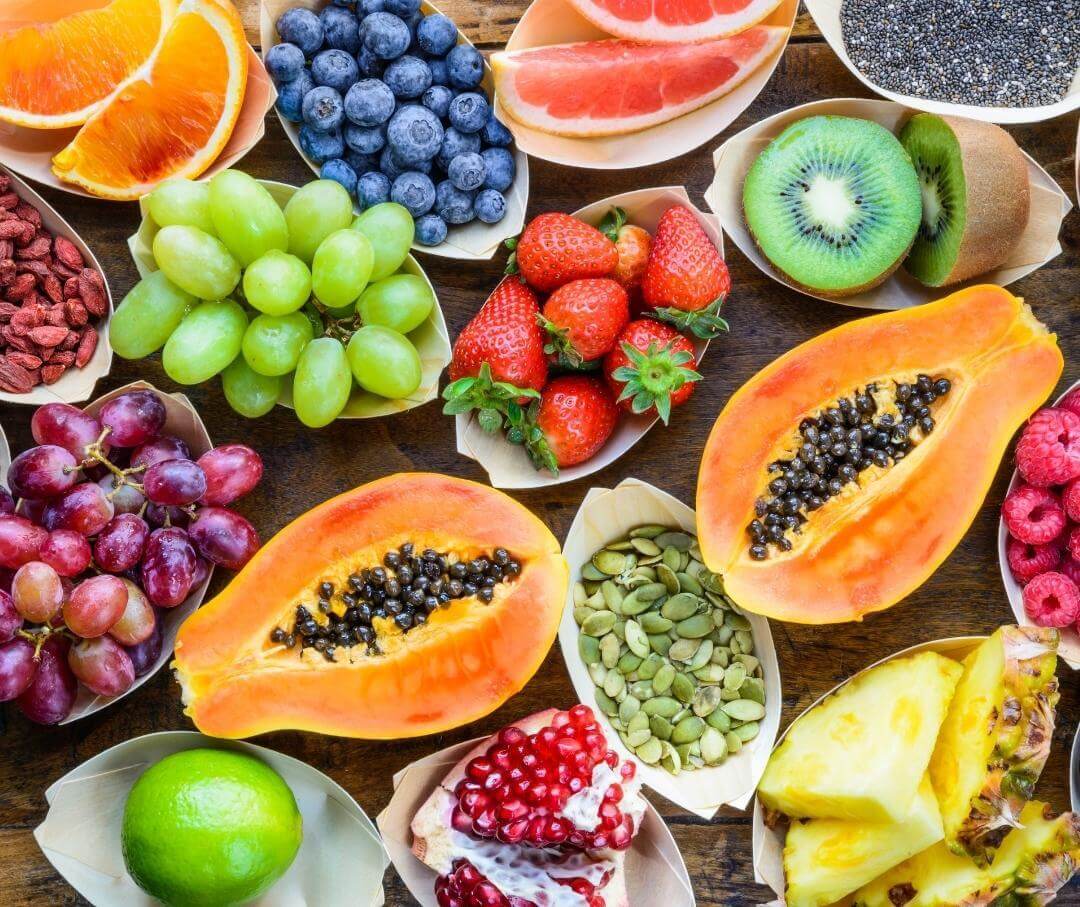
Tea enthusiasts will love cooking their oatmeal in steeped tea. Chai spices and vanilla Earl Grey are high-impact black teas that add natural flavor to your breakfast without any sweetness. Black teas are rich in polyphenols, a class of antioxidants, which preliminary research suggests may have a role in weight management.14 More evidence is required, however, to fully explore this area of nutrition.
<p class="pro-tip"><strong>Learn about </strong><a href="/blog/spices-that-may-lower-blood-sugar">spices that may lower blood sugar</a></p>
When and How Often to Eat Oatmeal
The most popular time to eat oatmeal is for breakfast. This large review confirmed that regularly eating larger breakfasts and smaller dinners can help with weight management goals.15 Many health care providers recommend eating within 45 minutes of waking up.
<p class="pro-tip"><strong>Learn about </strong><a href="/blog/exercise-before-or-after-breakfast">eating breakfast before or after a workout</a></p>
What to Avoid Putting in Your Oatmeal
Traditionally in the West, most oatmeal recipes are designed for a sweeter palette and include sugars, syrups, and even marshmallows or chocolate. Unfortunately, these additions may make your weight and blood sugar numbers higher than your intended goal.
Oatmeal Stylings that Can Sabotage Weight Loss
- Brown or white sugar
- Maple syrup
- Honey
- Chocolate chips
- Frozen or canned fruits with added sugar
- Flavored milk (or non-dairy milk products) with added sugar
<p class="pro-tip"><strong>Learn about </strong><a href="/blog/healthy-breakfast-oatmeal">ripened vs unripened bananas in oatmeal</a></p>
How to Incorporate More Oats into Your Diet Plan
In the cooler months of the year, you can prepare a bowl of hot oatmeal every morning either on the stovetop or in the microwave. Get creative with your daily recipes and try new ingredients if you feel the meal is starting to get boring.
Devoted oatmeal lovers will also bake oatmeal. It elevates the flavor of your dish and it truly feels luxurious. Here is a low sugar baked pumpkin oatmeal recipe published by the American Diabetes Association, which can be enjoyed by all who are trying to monitor their sugars, not just diabetics.16
Cold Oatmeal
In the summer months, you may not crave hot meals as often. Overnight oats are a perfect alternative because they are soaked in the liquid components of your oatmeal recipe and served cold or at room temperature.
A bonus of making overnight oats is the opportunity to create them in batches to last you throughout the week. Every morning you can pop a mason jar with overnight oats in your lunch bag and you are on your way. Cooling oatmeal overnight can also increase the amount of resistant starch in your meal which can be beneficial as a prebiotic.
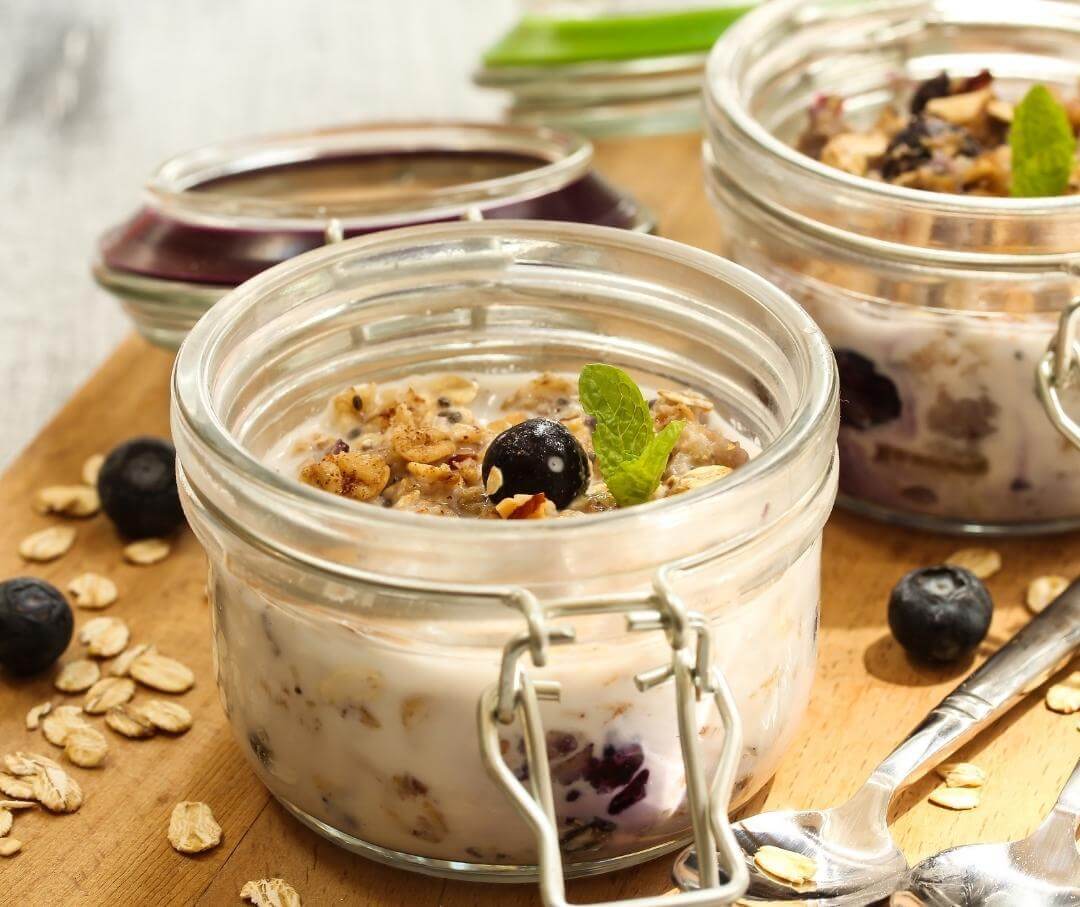
If overnight oatmeal is not appealing to you, pack dry oatmeal with your lunch and use it as a garnish. Mix it into yogurt or even sprinkle it onto salads for a low-fuss way to eat your grains.
Many people bulk up their morning smoothies with oatmeal by adding it directly to their blender. If you are mixing a smoothie, pay close attention to all of the carb-containing ingredients you blend. Even with the best intentions and only using natural ingredients, smoothies can become a sugar bomb.
To keep the sugar-content of your smoothie in check, choose 1-2 low GI fruits and add healthy fats such as avocado, plain yogurt, or nut butter. Add your scoop of oatmeal and blend with water, not juice. The healthy fats and proteins will help you feel satisfied and will slow down the digestion of the natural sugars. If you like a green smoothie, feel free to add some fresh spinach or other vegetables.
<p class="pro-tip"><strong>Learn about </strong><a href="/blog/protein-for-weight-loss">why protein helps you lose weight</a></p>
Using a CGM to Monitor Your Body's Response to Oatmeal
There are several ways to use your continuous glucose monitor (CGM) to track your body’s response to eating oatmeal. The first thing you should prioritize is consistency in how you prepare your oatmeal.
Start by cooking your oatmeal in water every day. Do not alternate between milky oatmeal and water-based ones; it will make it very difficult to see how each topping is impacting your blood sugars.
Next, experiment with different toppings, but try not to change everything at once. Healthy fats, like those in nuts and seeds, can slow down carb digestion. What happens when you add a banana? How do your numbers change when you leave the nuts but exchange the banana for blueberries? Isolating the fruit you add to your oatmeal is a methodical approach to tracking changes in your blood glucose.
An eye-opening piece of data you might find interesting is the speed of change in your blood glucose readings. Ideally, the numbers will change gradually, and you will not experience any sugar spikes or lows. Your CGM can show you which oatmeal topping combinations produce the most gradual response.
When you have a good sense of how different oatmeal toppings will affect you, you may move on to different types of prepared oatmeals. How does oatmeal affect your blood sugar when it is chilled overnight or baked? Using CGM data will help you feel confident your nutrition choices are moving you closer to your health goals.
The Takeaway
Oatmeal is a well-tolerated blood-stabilizing carb. It is rich in vitamins, nutrients, and fiber and is considered a very healthy grain.
Try to pick unprocessed oatmeal whenever possible and get creative with your toppings. Using a CGM device can make it easier to find oatmeal toppings that don’t cause your blood sugar to spike.
<p class="pro-tip"><strong>Learn more about </strong> <a href="/blog/oatmeal-metabolic-health">how oatmeal can support metabolic health</a>.</p>
- Item 1
- Item 2
- item 3
Topics discussed in this article:
References
- Gao, C., Gao, Z., Greenway, F. L., Burton, J. H., Johnson, W. D., Keenan, M. J., Enright, F. M., Martin, R. J., Chu, Y., & Zheng, J. (2015). Oat consumption reduced intestinal fat deposition and improved health span in Caenorhabditis elegans model. Nutrition Research, 35(9), 834–843. https://doi.org/10.1016/j.nutres.2015.06.007
- Soliman, G. A. (2019). Dietary Fiber, Atherosclerosis, and Cardiovascular Disease. Nutrients, 11(5), 1155. https://doi.org/10.3390/nu11051155
- Geliebter, A., Grillot, C. L., Aviram-Friedman, R., Haq, S., Yahav, E., & Hashim, S. A. (2015). Effects of Oatmeal and Corn Flakes Cereal Breakfasts on Satiety, Gastric Emptying, Glucose, and Appetite-Related Hormones. Annals of Nutrition and Metabolism, 66(2–3), 93–103. https://doi.org/10.1159/000365933
- U.S. Department of Agriculture, Agricultural Research Service, FoodData Central. (2018) Oats, raw. Retrieved June 3, 2022, from: https://fdc.nal.usda.gov/fdc-app.html#/food-details/1101825/nutrients
- Nutraceutical functions of beta-glucans in human nutrition. (2019). Roczniki Państwowego Zakładu Higieny, 315–324. https://doi.org/10.32394/rpzh.2019.0082
- Othman, R. A., Moghadasian, M. H., & Jones, P. J. (2011). Cholesterol-lowering effects of oat β-glucan. Nutrition Reviews, 69(6), 299–309. https://doi.org/10.1111/j.1753-4887.2011.00401.x
- Sanders, M. E., Merenstein, D. J., Reid, G., Gibson, G. R., & Rastall, R. A. (2019). Probiotics and prebiotics in intestinal health and disease: from biology to the clinic. Nature Reviews Gastroenterology & Hepatology, 16(10), 605–616. https://doi.org/10.1038/s41575-019-0173-3
- Calvo, M. S., & Lamberg-Allardt, C. J. (2015). Phosphorus. Advances in Nutrition, 6(6), 860–862. https://doi.org/10.3945/an.115.008516
- Olechnowicz, J., Tinkov, A., Skalny, A., & Suliburska, J. (2017). Zinc status is associated with inflammation, oxidative stress, lipid, and glucose metabolism. The Journal of Physiological Sciences, 68(1), 19–31. https://doi.org/10.1007/s12576-017-0571-7
- Polegato, B. F., Pereira, A. G., Azevedo, P. S., Costa, N. A., Zornoff, L. A. M., Paiva, S. A. R., & Minicucci, M. F. (2019). Role of Thiamin in Health and Disease. Nutrition in Clinical Practice, 34(4), 558–564. https://doi.org/10.1002/ncp.10234
- Beltramo, E., Berrone, E., Tarallo, S., & Porta, M. (2008). Effects of thiamine and benfotiamine on intracellular glucose metabolism and relevance in the prevention of diabetic complications. Acta Diabetologica, 45(3), 131–141. https://doi.org/10.1007/s00592-008-0042-y
- Schutten, J. C., Joosten, M. M., de Borst, M. H., & Bakker, S. J. (2018). Magnesium and Blood Pressure: A Physiology-Based Approach. Advances in Chronic Kidney Disease, 25(3), 244–250. https://doi.org/10.1053/j.ackd.2017.12.003
- Tarleton, E. K., & Littenberg, B. (2015). Magnesium Intake and Depression in Adults. The Journal of the American Board of Family Medicine, 28(2), 249–256. https://doi.org/10.3122/jabfm.2015.02.140176
- Pan, H., Gao, Y., & Tu, Y. (2016). Mechanisms of Body Weight Reduction by Black Tea Polyphenols. Molecules, 21(12), 1659. https://doi.org/10.3390/molecules21121659
- Lopez-Minguez, J., Gómez-Abellán, P., & Garaulet, M. (2019). Timing of Breakfast, Lunch, and Dinner. Effects on Obesity and Metabolic Risk. Nutrients, 11(11), 2624. https://doi.org/10.3390/nu11112624
- American Diabetes Association, Diabetes Food Hub. (n.d.) Baked Pumpkin Oatmeal. Retrieved June 3, 2022, from: https://www.diabetesfoodhub.org/recipes/baked-pumpkin-oatmeal.html

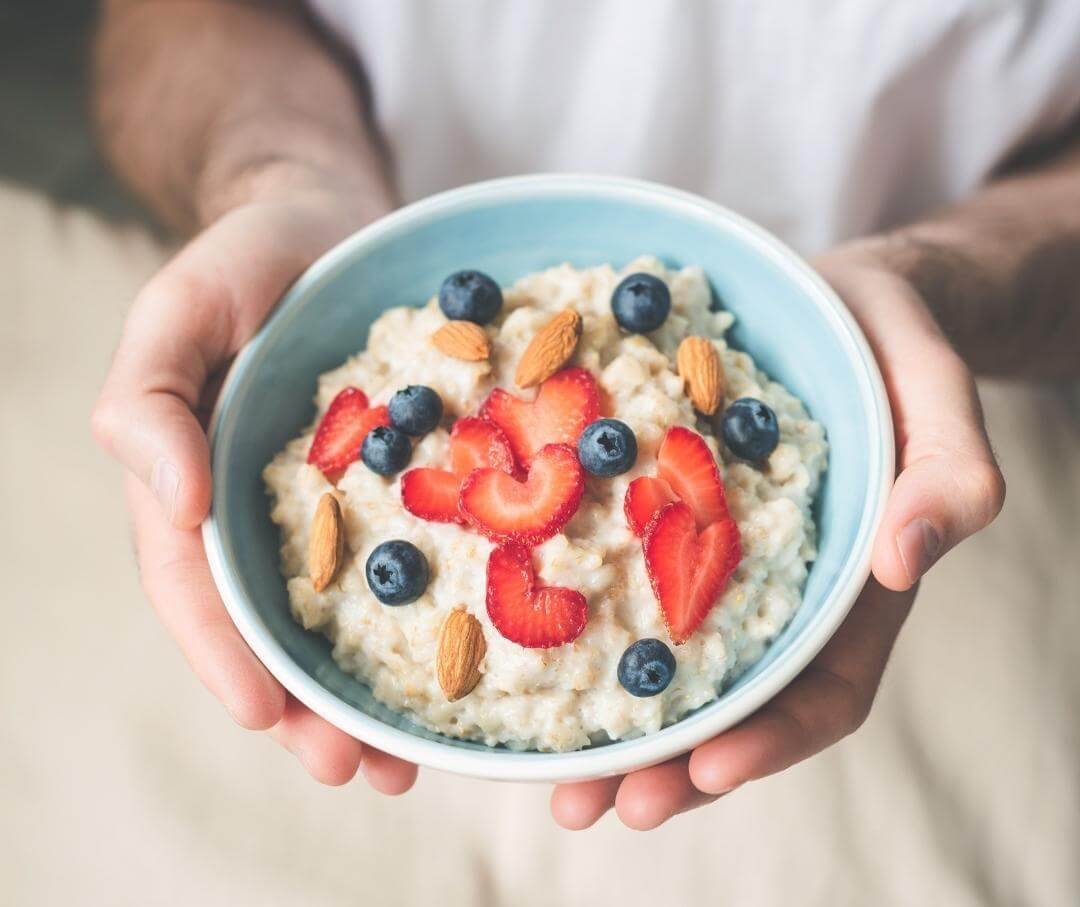


.jpg)
